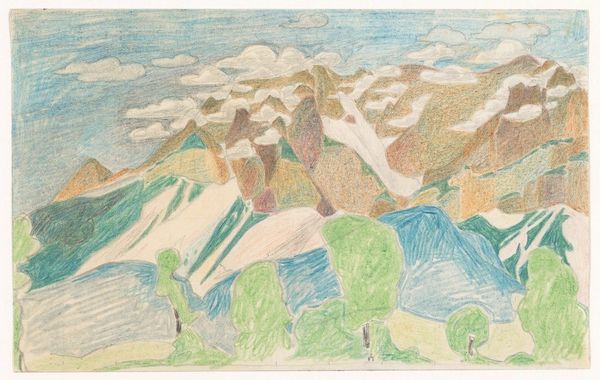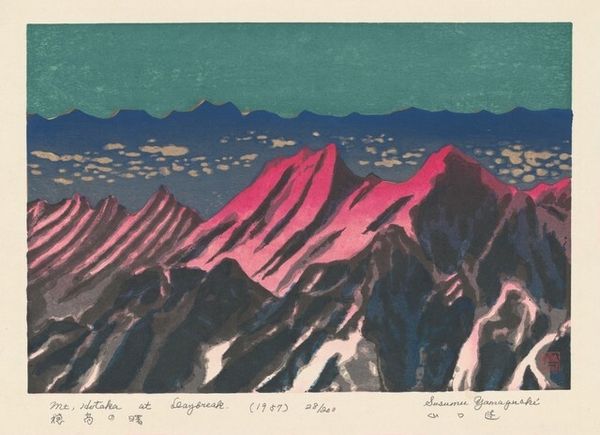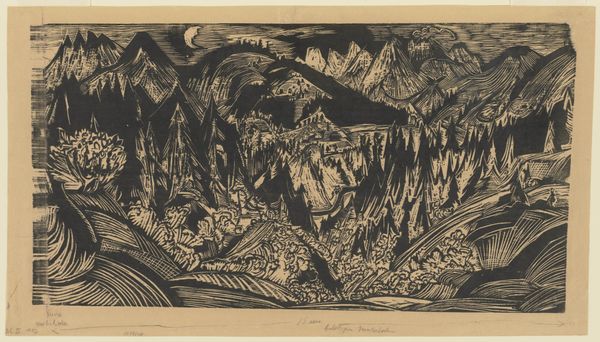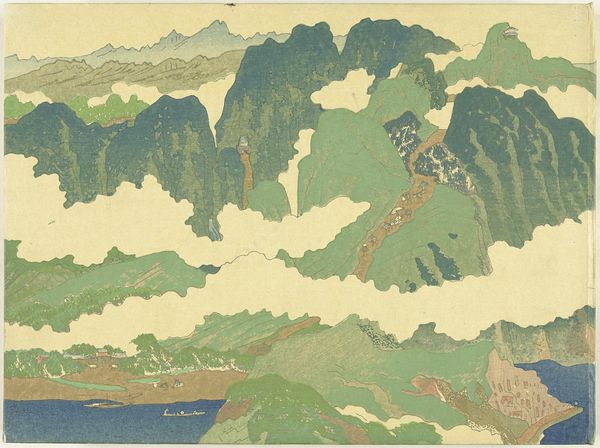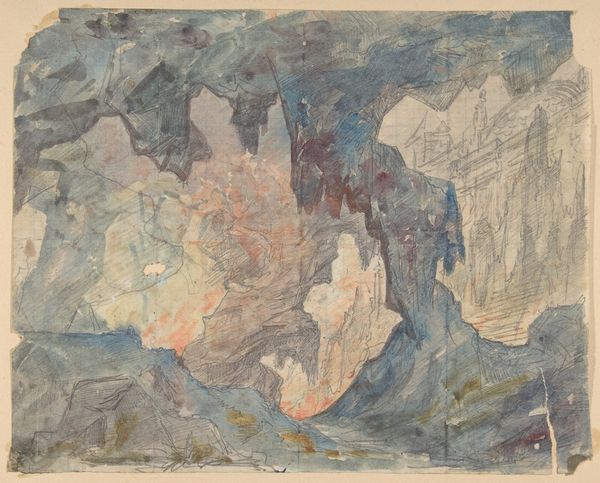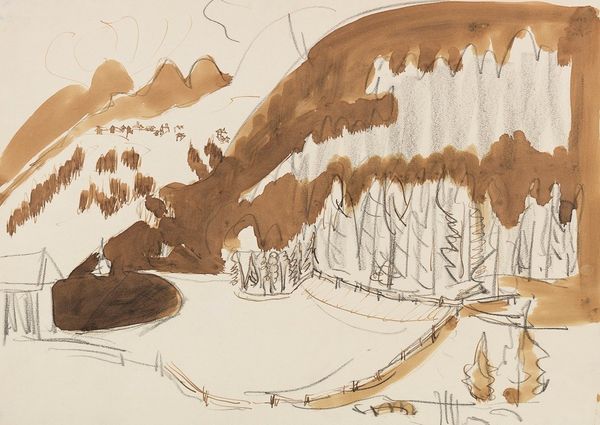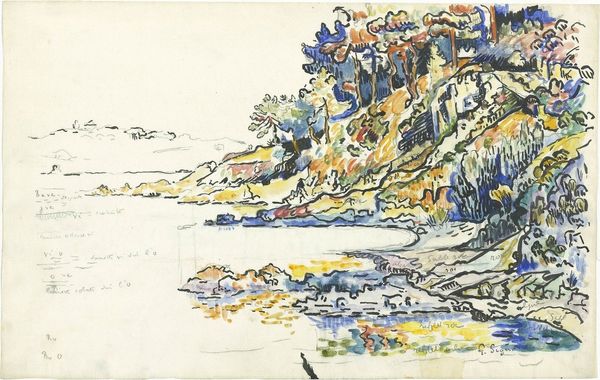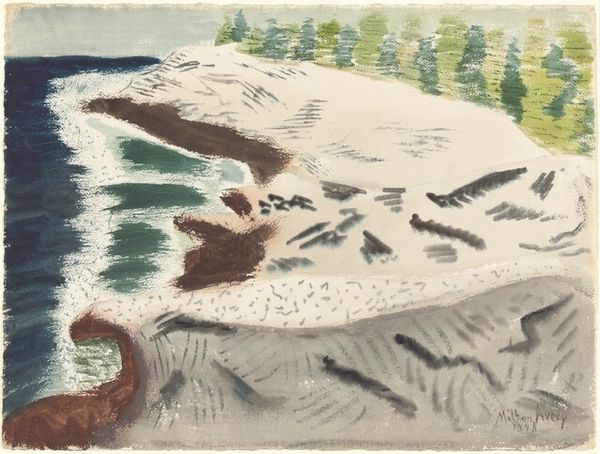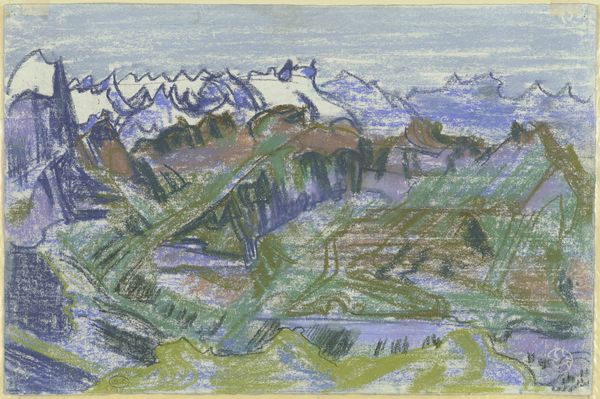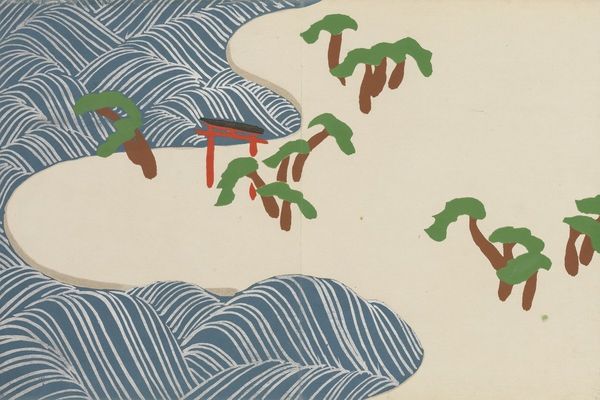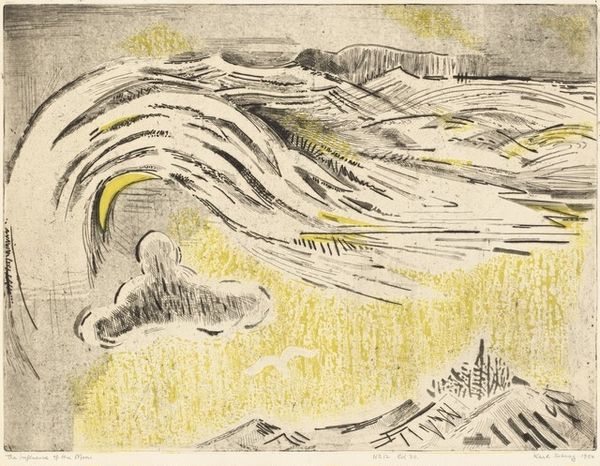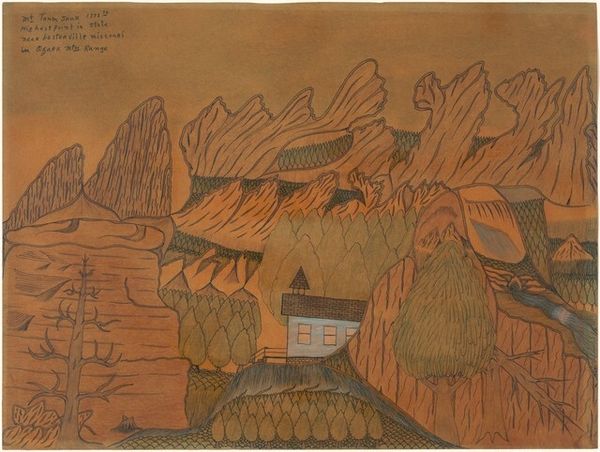
Briar Head Mtn of National Park Range of Bryce Canyon National Park near Hatch, Utah U.S.A. c. 1969
0:00
0:00
drawing, ink
#
drawing
#
landscape
#
outsider-art
#
ink
Dimensions: sheet: 50.8 × 60.96 cm (20 × 24 in.)
Copyright: National Gallery of Art: CC0 1.0
Curator: The work before us, "Briar Head Mtn of National Park Range of Bryce Canyon National Park near Hatch, Utah U.S.A.," was rendered circa 1969 by Joseph Yoakum, using ink as his medium. A most engaging composition. Editor: I am struck by the overall sense of serenity it conveys, almost dreamlike. The soft color palette, particularly the muted blues and greens, is rather soothing. There’s a quiet spirituality evoked here, isn’t there? Curator: Absolutely. Consider how the forms are flattened, reduced almost to planar shapes outlined in black, undermining any pretense of naturalistic representation. Note especially the linear quality defining the landscape’s structure. What meanings do you discern there? Editor: The forms almost read like archetypal symbols of the natural world. The mountains aren’t just mountains; they embody the idea of ‘mountain-ness’, enduring power, stability. And the trees are symbols of resilience and growth, echoing ancient symbols of life. It evokes a kind of reverence for nature itself, perhaps, with a memory infused by time. Curator: I am intrigued that Yoakum used line so deliberately. It delineates forms while simultaneously flattening them, forcing a confrontation between the real and the represented. This disruption enhances our awareness. The formal logic itself speaks to a deeply personal interpretation of the landscape, far removed from simple mimesis. Editor: I concur. The patterns Yoakum uses hint at another level of symbolism. For instance, those recurring, almost geometric shapes within the mountains and trees. These could reference the inner workings of nature, perhaps the subtle energies flowing through the landscape—a modern take on something rather ancient. The colors add a calming effect, too. Curator: True enough, and this considered engagement with planar shapes makes me think. Perhaps Yoakum’s idiosyncratic interpretation and technique aren't so much a representation as they are a contemplation. Editor: Indeed. It prompts us to examine the world beyond what we readily perceive, delving into something enduringly beautiful.
Comments
No comments
Be the first to comment and join the conversation on the ultimate creative platform.
